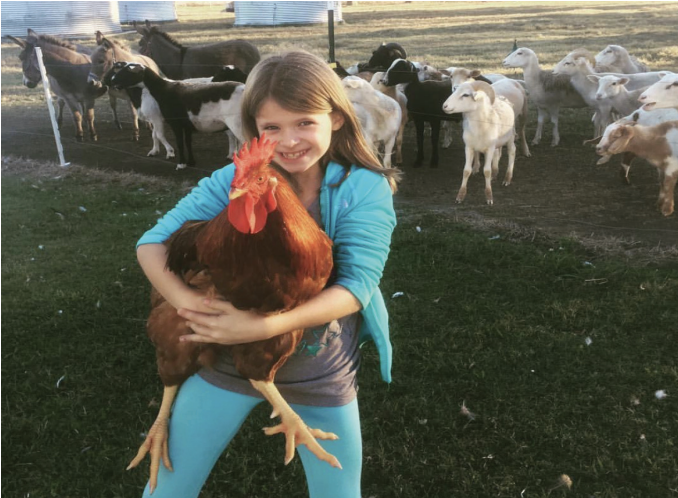Thursday, April 24
Catching Campus’s Most Famous Critters
Sophie Bilanin '26 in Features | October 14, 2022

The black squirrels commonly found around campus may not actually be as much of an enigma as they seem. These are actually eastern gray squirrels with a genetic condition that causes an unnatural distribution of melanin around their bodies. Legend has it that the squirrels were first imported by Princeton University alum, Moses Taylor Pyne, in the late 1800s. They were to be a part of the private zoo at his Princeton Mansion, Drumthwacket, which is now the New Jersey governor's mansion. As they are more aggressive and territorial than other squirrel species, however the black squirrels quickly scared off all competition and took over the area.
Essie Chafin ’26 has taken a particular interest in catching these squirrels. Born and raised on a sheep farm in Tarboro, North Carolina, Chafin has considerable experience dealing with wild animals. She has been catching birds, skunks, and rabbits from a young age with the help of her two border collie poodle mixes, Stella and Luna. Chafin would also herd and show the sheep on her farm, demonstrating extreme patience and skill.
After a little over a week on campus, Chafin began to not only notice the strangely pigmented squirrels, but also expressed interest in catching one before the end of the school year. When asked why, she responded, “Everyone is saying that I can’t, and I think it would be cool to take a selfie with it.” Even with these peculiar motivations, Chafin set her mind on catching a campus squirrel and began to form a plan. Yuna Cho ’26 explained to Chafin how she used to catch squirrels with her friends back home in Atlanta, Georgia. Cho would hold food out and stay perfectly still for up to half an hour, waiting for a squirrel to climb into her hand. Chafin took inspiration from this method and decided to spread peanut butter on a pair of gloves to lure in the squirrels.
Once students overheard the conversation with Cho, it was only a matter of time before both Dawes House and the rest of campus was bustling with excitement about the girl who wanted to catch a squirrel, and many Lawrentians were surprisingly passionate on the subject. It seemed that any non-Lawrentian, male student, upperformer, or teacher questioned about the topic was confident in Chafin’s failure. When asked for their opinions, two angry IV Formers Avery Bilanin ’24 and Noah George ’24 heatedly exclaimed, “She will never succeed!” Similarly, Sari Ashinoff, a student at the Rumson Fair Haven High School who has never met Chafin, answered “prob not” to this controversial question. One exception to this is English Teaching Fellow, Gabrielle Lescadre, who expressed belief in Chafin’s success, stating, “[Chafin] looks very agile, and she gives off squirrel-catching energy.”
Some students even worried for her safety, fearing rabies and scratches. Although squirrels typically aren’t known to attack humans, they do scratch and bite when they feel threatened. They also have very sharp claws and could accidentally wound anyone who tries to touch them. Like all rodents, they are almost never infected with rabies, but squirrels do carry illnesses and parasites that are just as dangerous. Despite this, a poll of 36 Dawes girls revealed that 67 percent still believe in Chafin’s abilities. Simi Rath ’26 even described her confidence in Chafin’s “perseverance,” “speed,” and “true Southern grit.”
After learning this, Chafin stated, “I am so grateful for all of the love and support. I will not disappoint.” Although the past few busy weeks have not allowed for any attempts yet, a recent drop in temperature has started to close the squirrel catching window. Who knows what the coming weeks hold in store for our campus’s mysterious black squirrels!
Related Articles
- A Sweet Return: Melba Reopens with New Flavors and Community Spirit Ella Song ’27
- The Clock’s Ticking: A Rush to Sort Out Scheduling Conflicts Bella Wu ’28
- Debunking the Dining Hall Debate: Is Lawrenceville’s Dining Really That Bad? Isabelle Lee ’27
- Senior Profile: Sophie Cheng ’25 Katherine Qiu ’27
- Dear Pearl: The Reveal! Pearl ... and Riley McKibben ’25
Recent Articles
- Announcing: Valedictorian, Aurelian Speakers, and Faculty Speaker Sophie Liu ’27
- Senior Profile: Sophie Cheng ’25 Katherine Qiu ’27
- Debunking the Dining Hall Debate: Is Lawrenceville’s Dining Really That Bad? Isabelle Lee ’27
- Welcoming Our New VPs for 2025-2026 Sophie Liu ’27
- A Sweet Return: Melba Reopens with New Flavors and Community Spirit Ella Song ’27